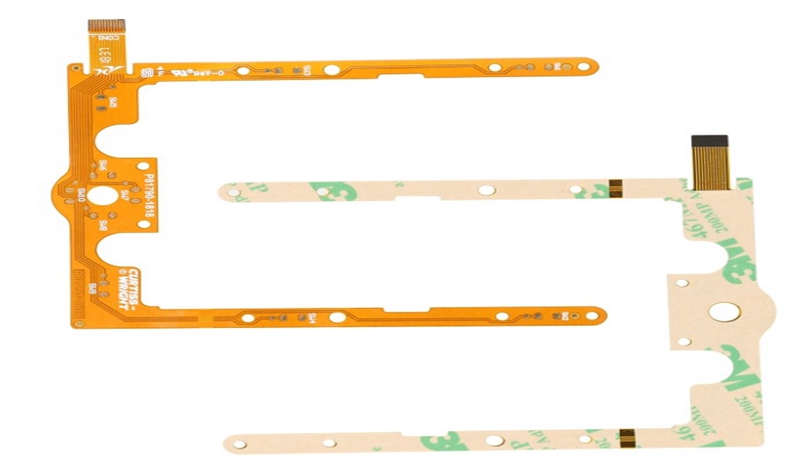Printed circuit boards can be divided into rigid printed boards and flexible printed boards according to the materials made. Rigid printed boards include phenolic paper laminates, epoxy paper laminates, polyester glass felt laminates, and epoxy glass cloth laminates. Flexible printed circuit board is also called flexible printed circuit board or FPC. Flexible circuit board is a kind of printed circuit board with high reliability and high flexibility, which is made of polyimide or polyester film as the base material. Circuit board. This kind of circuit board has good heat dissipation, which can be bent, folded and rolled, and can be moved and retracted freely in three-dimensional space. FPC can be used to reduce the size, realize weight reduction, miniaturization, and thinness, thereby achieving integration of component devices and wire connections. FPC is widely used in electronic computer, communications, aerospace and home appliances industries.
So what does flexible circuit board and rigid circuit board mean? What is the difference? The Flexible PCB Circuit Board Supplier will tell you below.
Flexible circuit board product features:
The product is small in size and light in weight, which greatly reduces the size of the device, and is suitable for the development of electronic products toward high density, miniaturization, light weight, thinness, and high reliability.
It has high flexibility, can be freely bent, rolled, twisted, folded, and three-dimensional wiring. Arbitrarily arranged according to the requirements of space layout, change the shape, and move and expand freely in three-dimensional space to achieve assembly and wire connection Integration.
Has excellent electrical properties, high temperature resistance, flame resistance. It has stable chemical changes, good stability and high reliability.
It has higher assembly reliability, provides convenience for circuit design, can greatly reduce assembly workload, and easily guarantees the performance of the circuit, reducing the cost of the whole machine. The strength is increased by using reinforcing materials to obtain additional mechanical stability.
Rigid PCB Features:
High density. For more than 100 years, the high density of printed boards has evolved with the increase in integrated circuit integration and advances in mounting technology.
High reliability. Through a series of inspections, tests and aging tests, the PCB can be guaranteed to work reliably for a long period of time (usually 20 years).
Designability. For various performance requirements of PCB (electrical, physical, chemical, mechanical, etc.), printed board design can be realized through design standardization and standardization, with short time and high efficiency.
Productivity. With modern management, standardization, scale (quantity), automation and other production can be carried out to ensure consistent product quality.
Testability. Established relatively complete test methods, test standards, various test equipment and instruments, etc. to detect and identify the qualification and service life of PCB products.
Flexible PCB Circuit Board
The difference between Flexible PCB Circuit Board and rigid circuit board:
The rigid circuit board and the flexible circuit board both had similarities and differences at the same time.
1. Current carrying capacity of wires: Compared with rigid circuit boards, the heat dissipation performance of flexible circuit boards is relatively poor, so sufficient wire width must be provided. Because the heat dissipation of the flexible circuit board is considered, extra width or spacing needs to be given to the wires.
2. Shape. Under normal circumstances, rectangles are selected, which can save the substrate very well, and there should be enough free margins near the edges. A sharp inner corner may cause tearing of the board. Therefore, the smaller wire width and spacing should be minimized, and the transition must be as smooth as possible. Sharp corners will naturally concentrate stress and cause lead failure.
3. Flexibility: Of course, the flexibility of rigid circuit boards is not comparable to that of flexible circuit boards. For a large number of bending cycles, flexible circuit boards have better performance.
The above is the difference between a rigid circuit board and a flexible circuit board.

没有评论:
发表评论